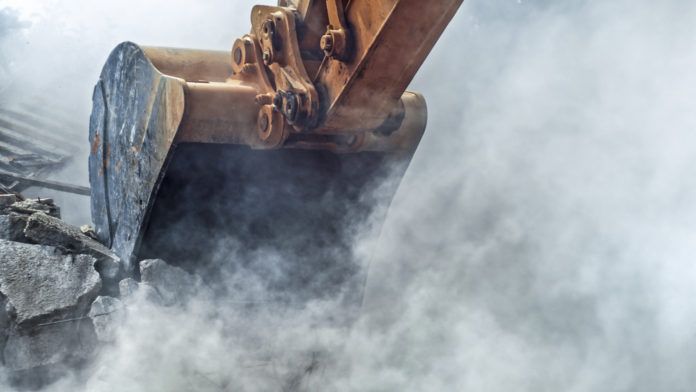Have you ever inadvertently demolished someone’s house? Probably not. Mostly because you are not in the house demolition business or you aren’t just, in general, epically irresponsible. Even if you are in the house demolition business, odds are you never rolled up to the wrong house and tore it down. What are the odds of that? Pretty low, I’m guessing, but it happened recently.
 A Texas demolition company inadvertently tore down the wrong house. This is a company that has been in business for 35 years and has demolished thousands of houses without something like this happening. On the surface, it sounds unimaginable to tear down the wrong house, but a few factors encouraged this unfortunate outcome.
A Texas demolition company inadvertently tore down the wrong house. This is a company that has been in business for 35 years and has demolished thousands of houses without something like this happening. On the surface, it sounds unimaginable to tear down the wrong house, but a few factors encouraged this unfortunate outcome.
There was not a current occupant of the 97-year-old house. The house was in Texas and the owner was in California. He had inherited the house in the fall of 2019 when a good friend passed away and was in the process of scheduling renovations. The house probably looked the part of a building that someone wanted to come down. Additionally, the house did not have a house number, but there were numbers on the curb. However, due to recent rains, the curb address was obscured by water and debris.
When we look at errors or root causes, these would certainly be identified as contributing factors. When looking at contributing factors, people tend to overreact one way or the other. Faction 1: There were contributing factors? The worker is blameless. Faction 2: Doesn’t matter, the worker should have caught this. Hammer the worker.
This is a good example of why you should operate in the middle.
Depending on your perspective, this next statement will either strike you as heresy or validation. It’s OK to fault the worker. To be clear, it’s not all or nothing; the fault is almost always shared. Depending on what happened, the fault will fall along a blame spectrum ranging from “100% the worker’s fault” to “100% the organization’s fault.” It’s somewhere in the middle. Generally, we tend to skew a little too heavy to the “blame the worker” side. Some recognize this and then over-correct to never blame the worker. But again, it’s OK to point out what the worker did wrong.
In this example, why did the workers take a critical and irreversible step (that first drag of the backhoe bucket teeth through the roof) without being 100% sure their action was correct? How hard would it have been to brush away the debris and read the curb address? It was right there. Then verify it by looking at the adjacent houses. If the house on the left is 91, the house on the right is 95, and we can see houses 92 and 94 across the street, then the 93 on the curb address is looking accurate. It’s a pretty bold move to “think” it’s the right house and then start tearing it down. At this point, we can comfortably move down the blame spectrum toward the workers and might even have trouble figuring out where the organization went wrong.
However, looking at how the demolition company responds will tell you what they could have been doing all along. You can almost guarantee the first thing this company did is to require a peer check: two people to verify the physical address before demolition starts. They are also now required to sign something to make it more official and let them know “we’re serious” about this. They probably added it to a pre-job brief that they either never had before or weren’t using properly.
With all this comes training and a stand-down to reinforce the expectation that no critical or irreversible action is to be taken unless we are sure it’s accurate. Hopefully, they will go even further and send the crew out with a plat map and picture of the house. Perhaps the estimator or planner will have the homeowner place a big sticker on the inside the front window saying “this is the house”—akin to marking your own knee before surgery.
So, here’s a thought exercise: What is the safety thing that keeps you up at night? Ask yourself, if this happened, what do I think the response will be? If the answer is “punish the workers” and nothing else, you’ve got big culture problems. But if you can identify some actions that the organization will then be “forced” to take, how about starting to do those things now, before the accident happens? It’s OK to fault the worker, but how about reinforcing expectations and coaching the worker now to avoid the need to blame them later?
Operating in the middle ground now will help you stay off the blame spectrum all together.
Toolbox Talks offers quick insights and thoughts to use for your toolbox (tailboard) talks. Dave Sowers is a founding member of Knowledge Vine, a veteran-owned human performance training and consulting organization that strives to reduce the frequency and severity of human errors in the workplace. He has almost 30 years of experience in power generation and the utility industry. He is a veteran of U.S. Navy Nuclear Power Program and holds a bachelor’s degree in resources management and a master’s degree in both management and emergency management and homeland security.



